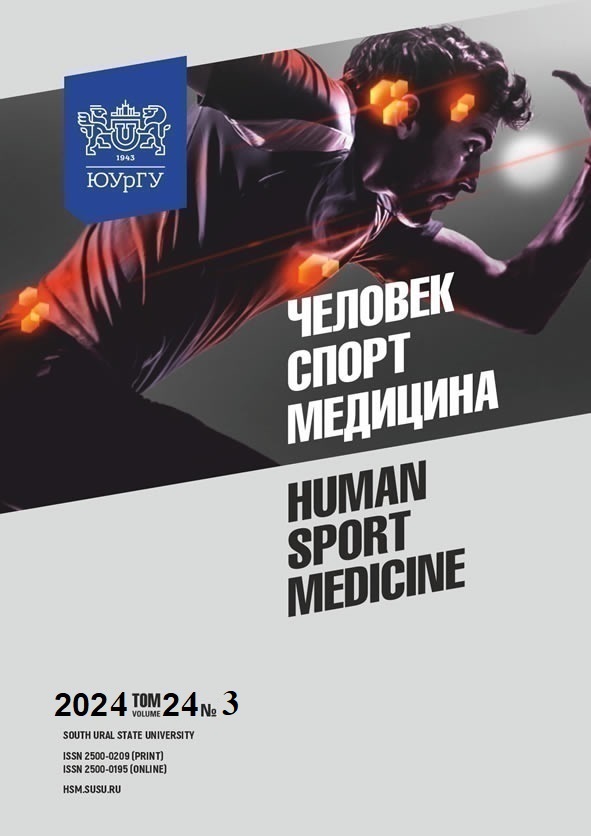AN INDIVIDUAL APPROACH TO PHYSICAL EDUCATION AT UNIVERSITY
Abstract
Aim. This study aimed to investigate the level of physical development and assess body composition in young non-athletic men aged 20–21 years to provide an individual intervention program. Materials and methods. The research involved 47 male students aged 20–21 from South Ural State University. Morphofunctional measurements were performed utilizing a professional Tanita segmental body composition analyzer BC-418MA. This equipment is specifically designed for application in health and fitness facilities. The device rapidly determines body composition. Results. More than 32% of participants exhibited excessive body fat, predominantly arm fat (32–36%). Conversely, 36% of participants had low leg fat, while 68% exhibited low trunk fat. Functional analysis demonstrated that over 82% of subjects had inadequate resting HR, 10.64% exhibited satisfactory HR levels, and merely 6.38% demonstrated optimal performance. Conclusion. Based upon the ranked mean values derived from the research outcomes, primary algorithms were formulated to automatically generate individual recommendations for health and fitness activities.
References
References on translit
Copyright (c) 2024 Human. Sport. Medicine

This work is licensed under a Creative Commons Attribution-NonCommercial-NoDerivatives 4.0 International License.















